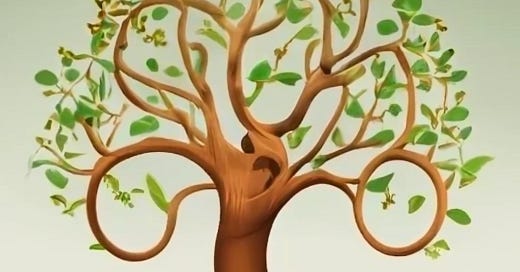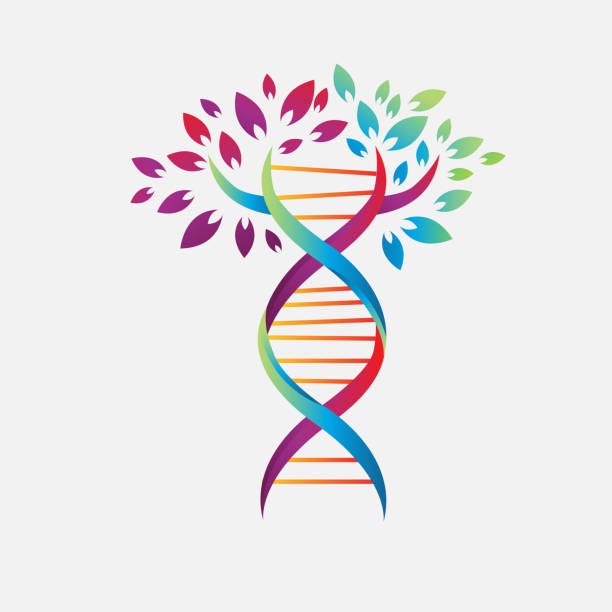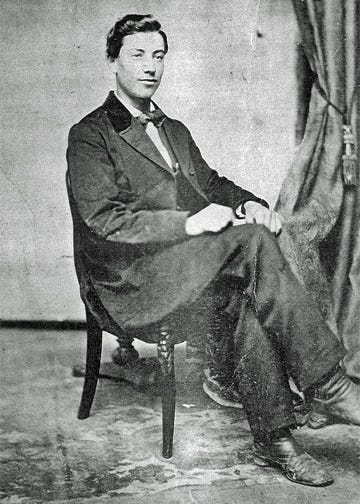I have seen that look before.
Jackie sits, hunched over copious notes. Her eyes fixed on arcane figures and charts. In front of her, the dining table holds piles of stuffed folders.
Over 45 years ago she was immersed in a pre-Google master’s dissertation dealing with the connection between Vitamin B and bread. As an observer, I admired her tenacity.
Then there was the horticulture degree and the required plant identification class. Jackie compiled hundreds of flash cards while memorizing mysterious plant identifications– in Latin, English, common names, as well as genus, species and variety. I struggle identifying common flowers; she can provide a dissertation on the characteristics of Ribes aureum, (Golden Currant, a California native that blooms in our garden)
There have been other research endeavors, always accompanied by that look of intense curiosity, fascination and determination.
Now it’s Ancestry.com. She is placing that spotlight focus on our lineage with previous generations. Each family branch is compiled in separate folders, neatly arranged in a plastic file box. The woman has a gift for detail.
And she is not alone. In late 2020 the Blackstone Group acquired Ancestry.com for $4.7 billion. At 25 million users, Ancestry.com is the largest provider of consumer DNA. It is also available in 128 countries. Now with artificial intelligence options, the company has access to billions of genealogical documents, photos, even gravestone sightings.
Ancestry started out in 2002 as a small genealogical company loosely affiliated with LDS members. Now it is a publicly traded company. Headquartered in Lehi, Utah, Ancestry also has offices in San Francisco, Dublin, London and Melksham, England; Sydney, Toronto, Grafing (near Munich), and Paris.
Then there is Finding Your Roots, hosted by Harvard’s Dr. Henry Louis Gates Jr. The series uses traditional genealogical research (written records) and genetics (DNA testing) to discover the family history of well-known Americans. Genetic techniques include Y-chromosome DNA, mitochondrial DNA, and autosomal DNA analyses to infer both ancient and recent genetic relationships.
Each Tuesday night we gather in front of the television and marvel at the genetic history of famous people and the great detective work of Dr. Gates and his staff. Given her diligence, I think Dr. Gates would be lucky to have Jackie on his team.
Thanks to the investigative powers of Ancestry, Jackie has access to ancestral documents: items like passage records, obituaries, war service records, land titles, wills, education records, even diaries and journals.
Companies like Ancestry use fragments of our DNA (deoxyribonucleic acid) to trace our genetic makeup. Those valuable traces are part of the 23 chromosomes passed along by our parents and our ancestors. We start off with 50% from each parent. The percentages and influences decrease with each prior generation. (25 percent from each grandparent etc.) By the time we get to the 5th grandparent, it is down to 1 percent.
With breakthroughs in biotechnology and artificial intelligence, our backgrounds become increasingly accessible. What makes the research interesting, is the results are amazingly individual. There may be 8.1 billion people in the world, but genealogy research makes us think of the individual.
In discovering our past there is a strong partnership between documentation and DNA. For example, I know my grandmother Mary Ryan came from Ireland’s Tipperary County, but her predecessors remain a bit of mystery because 19th Century Irish census records were destroyed by a fire in the Public Records Office in 1922. Yet, Ancestry was able to find my link with Mary.
I subscribe to both Ancestry.com and 23 and Me. Each service requires “spitting” into a plastic tube and applying a tightly fitting cap. The sample is sent off to a lab, and soon an ancestral tracing arrives via email. In a sense one spits into the wind, and an intriguing identity arrives at the doorstep.
The results for both companies were fairly predictable based on family stories.
47% Irish (Thanks Mom)
21% Germanic Europe (Thanks Grandma Reimers)
13% Welch (Thanks Dad)
8% Scottish (Thanks Dad, again)
7% Swedish and Danish (Thanks invading Vikings)
4% Norse (Thanks Vikings again)
Of course, the genetic map is just the beginning. The hard work involves digging through documents such as baptismal records, military files and obituaries. Thanks to Jackie’s research skills some amazing connections have been established. Once a member builds a family tree, Ancestry matches the family names with other trees that include the same names. Also, the company adds information such as census records. At each stage, a member can accept or reject the data. He or she can even put the suggested information on hold. The incoming information can be quite dramatic.
For example, I knew my great-grandfather was a Civil War veteran. But I did not know he enlisted in the 1st Heavy Artillery Wisconsin Regiment and saw action in Tennessee’s Lookout Mountain and the Battle of Chattanooga. I once read portions of his letters to his family back home, but never knew about his participation in such critical campaigns. Pursuing the regiment’s roster, I witnessed the entry, Henry E. Brown, enlistment – July 6, 1863 to September 21, 1865. Quite sobering. Another relative, Great, Great Grandfather Patrick Terry served with Wisconsin’s 14th Regiment, Company C infantry.
Pvt. Henry E. Brown, of the 1st Wisconsin Regiment, enlisted July 6, 1863
Another connection came by way of the North Tipperary Genealogy Centre in the city of Nenagh, Ireland. Thanks to some dogged research by the good folks at the Centre, I learned that Jane Ryan, one of eight children, immigrated to New York in 1887 at 13 years of age. At age 20 she would marry Edward Blaney in North America.
Because of her immigration from the land of poets, I am entitled to dual citizenship with Ireland, and receive the benefits of Ireland’s European Union membership.
Again thanks to Jackie’s dogged due diligence I was able to get glimpses of life in the distant past. Tenant farmers, large family sizes with seven to 14 kids, a few landowners – people connected by church membership and family bonds. There was also a history of horrific tragedies like drownings, fatal car and farm accidents, and of course death at childbirth. Life was tough and these people scrambled. Wills often included meager but prized possessions like an iron pot, a bed, a few shillings, linen, even 12 cloth napkins. Death was a morbid companion – lurking with diseases, war and unanticipated missteps.
One also gets a sense that the ancestors were ambitious people who took risks. They used advances in transportation to find a better place. Advances like sailing ships, railroads and waterways such as the Erie Canal to trek from New York to Wisconsin. They also benefitted from a westward expansion that offered land and fresh starts. With recent history, I think of my parents who left frigid Green Bay to land in Santa Clara Valley in the 1950’s. That led to many benefits for me like affordable education and housing as well as economic opportunities.
Sometimes I speculate what future generations will discover about our lives. Will they have access to my sixth-grade report card? Will there be documented minutia about my health issues? In contrast to our past generations, they might consider my Baby Boomer life as a comfortable walk in the garden. I hope they realize, given the times, I did the best I could.
I also think about people who have had their genealogical past erased. Tragically many African Americans face a gap in their genetic pasts due to slavery. In much of the 19th Century, the census lists slaves statistically under the owner’s name. Of course, the identity of ancestors before enslavement is unknown. In a sense, many of our fellow Americans have lost their past, literally stolen by an immoral institution.
Meanwhile Jackie continues her amazing research. She has found tiny villages in Yorkshire where her ancestors once lived. Other leads take us to Lincolnshire. In September Brian, Jackie and I strolled through the village of Ramsgill, a home base for some members of her distant clan. Off in the distance we could see a grand estate, perhaps the home of a former “peerage”. Given the static nature of the local economy in the 18th Century, it made sense to take a huge risk and head for the new world.
Jackie Brown, Brian Brown and Ian Anderson, Louth, England
Later we stayed in the Lincolnshire village of Louth. Through Ancestry, Jackie and Ian Anderson had made a connection. Ian and Jackie share a DNA bond with a great-great grandfather, distant relatives of sort. For once, I remained silent through dinner and listened to two relatives share family stories. I spent the time looking for common mannerisms or physical traits. I didn’t find them. The discussion consisted of contrasting lifestyles and an occasional “what if”. But what I did notice was a common bond, a congeniality, a link perhaps. And that was enough.







I found a whole new family via AncestryDNA, my birth-father's side of my family and 4 half-siblings. Very fascinating all this DNA stuff! And of course, the documents in the archives are so fun to discover. It can be almost addicting, because hours of digging results in a little treasure, we just keep digging!
Ah, where we came from and what are we made up of.
The older I get, the more important DNA appears to be over free well in decisions made.
Are we just a infinitesimal small chemical reaction to experienced events, predetermined by our makeup at the time of the Big Bang? It appears so.
While suddenly ancestor study has become greatly enhanced by the internet, we are still limited to gathering names and at best recording major events like marriage, birth, and death with a steamship passage tossed in.
During the Enron trial it was revealed emails have half lives of at least a thousand years and when you erase an email it is just erased on your computer but Big Brother Google has saved it for all eternity. (Back then I ran around the office proclaiming put nothing in an email that you would not cc to the FBI, something that turned out fortunate when I was later sued for 6 million dollars, a lawsuit dismissed with prejudice.)
The future will be vastly different.
In 3 more generations Google and other internet providers will be mature companies of little growth potential.
Then an accountant will come up with a big money cash cow to enhance profit and stock price, selling individual data stored on their vast files of long dead users to their descendants.
For only a million dollars, (equivalent to $100 today dollars) you will be able to follow in almost real time the life history of grand parents and great grand parents by viewing their emails and internet search histories.
Hopefully by then, everyone will have been exposed already so "reality" of what people really are like that none will be disturbed that a grand parent voted for by then disgraced Biden or Trump or sent emails to a hidden love.
So, to my great grandchildren, this reply is to let you know, great grand pa has nothing to hide as he never emailed the real me.